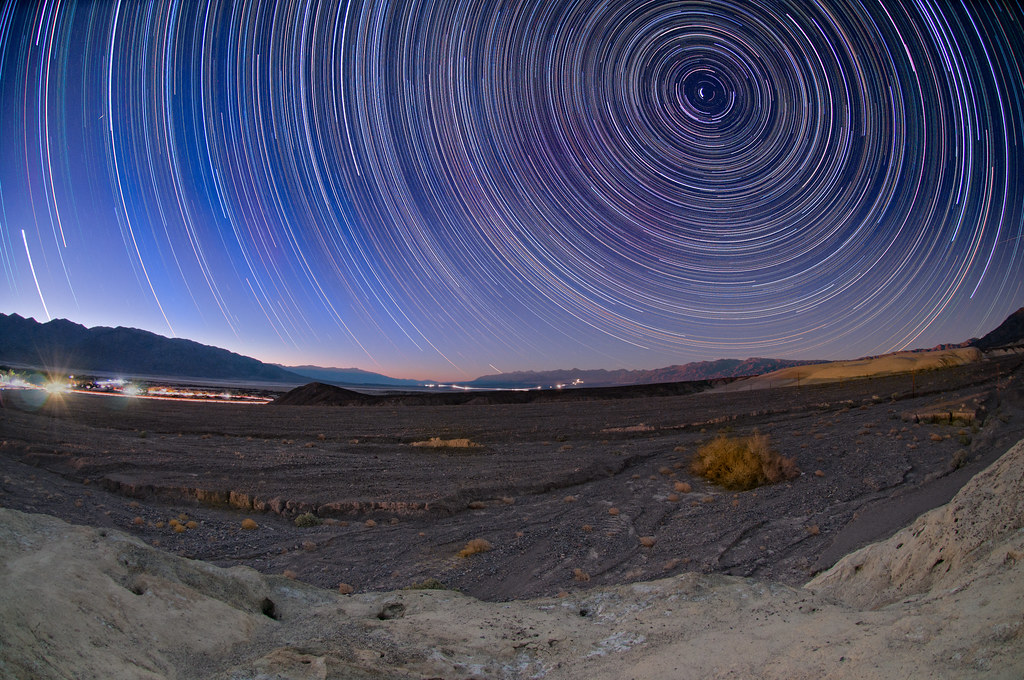Death Valley is one of the grandest and most expansive landscapes on the North American continent. Therefore, camping at Furnace Creek is something of a paradox because conditions are cramped and noisy. There’s precious little space for people who don’t travel in recreational behemoths replete with generators and air conditioning.
On a recent visit I was none-the-less glad to pitch my tent in Furnace Creek with its below-sea-level warmth after the bitter cold of higher elevations. I picked my spot carefully: across the service road was a bluff facing north. After reconnoitering, I felt like I could leave my camera unattended because it couldn’t be seen from below.
I used an AC adapter to plug my DSLR into a lithium ion power source most often used to fire studio lighting equipment on location. Next, I set my intervalometer with the camera on Bulb to fire an unlimited number of exposures. I used my 10.5mm lens, with the aperture set to f/4 and the ISO to 400. Then I climbed down the bluff, and went to sleep.
Back home, I used Statistics in Maximum mode to stack 75 of the four minute exposures, for a total lapsed exposure time of roughly five hours. Note, this took almost as long to process on the computer as it did to expose—definitely plenty of time for dinner and a nap while my fully loaded Mac Pro did its thing.

Pingback: Valley of Fire Star Trails | Photoblog 2.0
Pingback: Night Sky, New River | Photoblog 2.0
Pingback: Shortlisted | Photoblog 2.0
JTasoff
15 Aug 2011The very best of luck on the competition, though “luck” is not a factor.